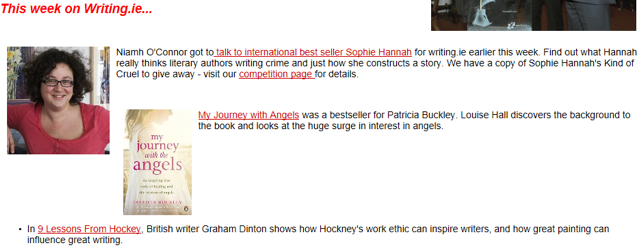
http://www.legendarydartmoor.co.uk/widde2-fair.htm
Tom Pearce. Tom Pearce, lend me your grey mare,
All along, down along, out along lee,
For I want for to go to Widdecombe Fair,
Wi’ Bill Brewer, Jan Stewer, Peter Gurney, Peter Davy, Dan’l Whiddon,
Harry Hawk, old uncle Tom Cobley and all, old Uncle Tom Cobley and all.
And when shall I see again my grey mare?
All along, down along, out along lee,
By Friday soon, or Saturday noon,
Wi’ Bill Brewer, Jan Stewer, Peter Gurney, Peter Davy, Dan’l Whiddon,
Harry Hawk, old uncle Tom Cobley and all, old Uncle Tom Cobley and all.
Then Friday came, and Saturday noon,
All along, down along, out along lee,
But Tom Pearce’s old mare hath not trotted home
Wi’ Bill Brewer, Jan Stewer, Peter Gurney, Peter Davy, Dan’l Whiddon,
Harry Hawk, old uncle Tom Cobley and all, old Uncle Tom Cobley and all.
So Tom Pearce he got up to the top o’ the hill
All along, down along, out along lee,
And he seed his old mare down a making her will
Wi’ Bill Brewer, Jan Stewer, Peter Gurney, Peter Davy, Dan’l Whiddon,
Harry Hawk, old uncle Tom Cobley and all, old Uncle Tom Cobley and all.
So Tom Pearce’s old mare, her took sick and died.
All along, down along, out along lee,
And Tom he sat down on a stone, and he cried
Wi’ Bill Brewer, Jan Stewer, Peter Gurney, Peter Davy, Dan’l Whiddon,
Harry Hawk, old uncle Tom Cobley and all, old Uncle Tom Cobley and all.
But this isn’t the end o’this shocking affair,
All along, down along, out along lee,
Nor, though they be dead of the horrid career
Of Bill Brewer, Jan Stewer, Peter Gurney, Peter Davy, Dan’l Whiddon,
Harry Hawk, old uncle Tom Cobley and all, old Uncle Tom Cobley and all.
When the wind whistles cold on the moor of a night
All along, down along, out along lee,
Tom Pearce’s old mare doth appear ghastly white,
Wi’ Bill Brewer, Jan Stewer, Peter Gurney, Peter Davy, Dan’l Whiddon,
Harry Hawk, old uncle Tom Cobley and all, old Uncle Tom Cobley and all.
And all the long night be heard skirling and groans,
All along, down along, out along lee,
From Tom Pearce’s old mare in her rattling bones
And from Bill Brewer, Jan Stewer, Peter Gurney, Peter Davy, Dan’l Whiddon,
Harry Hawk, old uncle Tom Cobley and all, old Uncle Tom Cobley and all.
This Dartmoor song is one of the best known folksongs in England and can be found all over the world. It is thought to have been first heard in the early 1800’s and the song first published either in 1880 by Mr W. Davies or in 1888 by Mr. W. F. Collier. However it was Sabine Baring Gould’s book – Songs of the West that brought it to fame when it was published in 1890. Some people will say the tune originated in Somerset but we don’t talk about them. The 5th Devon Volunteers used a more up tempo version as their theme tune and even after they were merged into the Devonshire Regiment the tune was heard as the men went into battle during the Boer Wars. Exeter City football club used to play the song before every match, that is until they hit a losing streak and thought the song may have something to do with their losses.

- What does the story line refer to? Clearly it is about a group of men who ask Tom Pearce if they can borrow his grey mare to get to Widdecombe Fair. The men agree that the horse will be returned by midday on Saturday by the latest. The designated time comes but the men and his horse don’t appear. Tom Pearce then sets out in search of them. When he reaches the top of Widdecombe Hill he sees his horse making its ‘will’ after which it falls sick and dies. Poor old Tom then sits down and sheds a tear or two for his departed horse. Finally the song suggests that “when the wind blows cold on the moor of a night,” the ghost of Tom Pearce’s grey mare appears to the accompaniment of “skirling and groans,” and the “rattle of bones.” Strangely enough there has never been a single sighting of the ghostly grey mare. In the unmentionable Wessex version events are similar except the mare is a bay coloured and Tom Pearce goes to the top of Bunthill (which is thought to be Bonehill) and is told that there had been a “terrible spill,” and that he found the “racketty crew.. ” “strewed all over the shop.” On the eve of Widecombe Fair the ghost of the horse appears in a cloud of blue light. In all possibility the men borrowed the mare to pull a gig as clearly it is impossible for eight men to ride a horse. Having had a busy time at the fair they got cydered up and overturned the gig on their way home which resulted in the death of the mare which roughly equates to the unmentionable Wessex version.
- However, whilst recently reading a book on ‘spirit roads’ by Paul Devereux I came across a theory that would place the origins of the song way back in time and across to the European continent. In the book he discusses a paper that the noted folklorist Theo Brown wrote in which she contended that the concept of a spectral grey/white horse came from mainland Europe. It is suggested that the motif of the song was brought over to Dartmoor by German tinners who came across to work in the mines during the Elizabethan period. Some of these miners came from the Harz mountain region where there (along with many other European regions) was a tradition of der Schimmelreiter or the rider on a grey/white horse. The idea being that the grey horse was a guide to the Otherworld which would lead the souls of the departed into the venerated realms of the dead. Therefore in the contexts of Tom Pearce’s grey mare, the reason he, “sat down on a stone, and he cried” was because he realised that the grey horse’s death meant all future spirits were condemned to oblivion as they would have no spirit guide to take them to the Otherworld. The whole concept of the belief was that the grey mare represented an entity which hovered between life and death and acted as a, “boundary figure” without out which no human soul can be led into the life-after. It is this very concept that is a much later and darkly humorous invention that used the theory of the grey horse spirit guide as its motif.
- There was both a Bill Brewer and a Tom Pearce living in the northern moorland village of Sticklepath. The Pearce family owned a large mill in the village, outside which was said to have been the stable where the grey mare was kept. There is also a grave in the nearby village of Spreyton where a Thomas Cobley or Cobleigh was buried in 1844. This however is not the Tom Cobley, this person is said to be his great nephew. Thomas Cobleigh was 82 when he died reputedly having inherited his Great Uncle Tom’s estate and who lived at Butsford. Tradition has it that the original Tom Cobley died in 1794 at Spreyton, nobody knows where his grave is. All the surnames are of true Devonshire stock, there are still plenty of Brewers, Stewers, Davys’ Pearces, Whiddons, Hawks and Gurneys to be found today.







